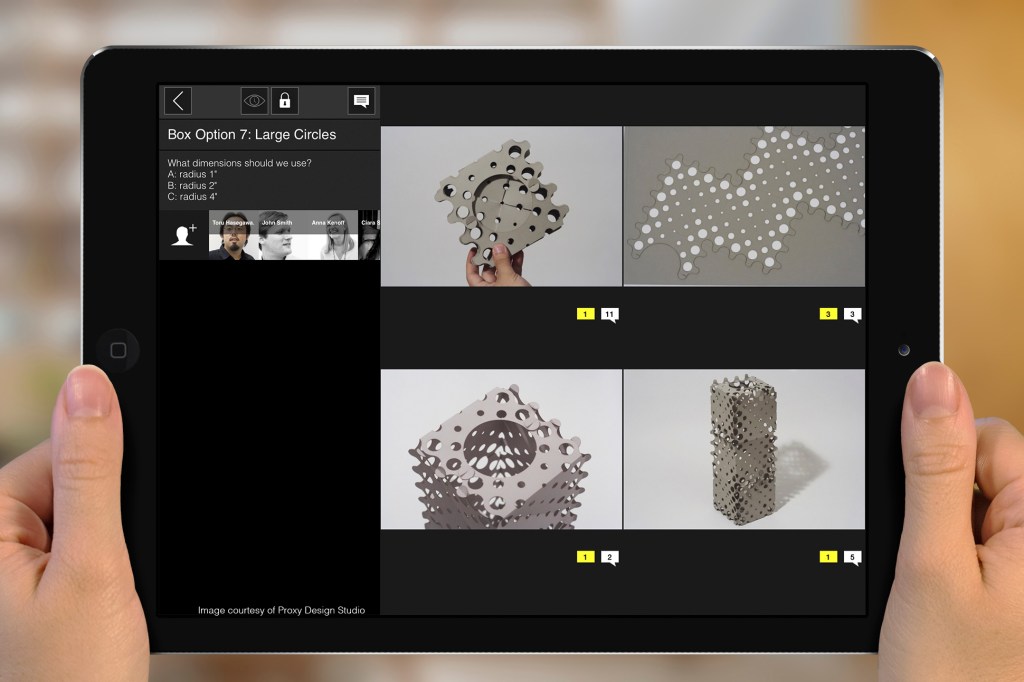From letters to faxes to emails to texting, our response
times—actual and expected—have become progressively shorter. As a result, it can be frustrating when outstanding questions or decisions aren’t answered
expeditiously. In architecture, where visuals are everything, texting
questions can be tough. For example, choosing a color palette is much easier
when one can see the options side-by-side. Similarly, it’s often more efficient to
explain a discrepancy on the job site by physically marking up a drawing
or a photograph.
The New York–based design team Morpholio realized this
disconnect years ago and started working on an app that allows designers to communicate
by texting imagery. Yesterday, they introduced Crit (iTunes, free), the latest app in
the Morpholio suite, which also includes Trace
and Board.
Unlike the Crit tool that was rolled into Morpholio’s
eponymous app, this standalone tool provides the pop-up notifications and texting
interface, and retains the discussion thread between users. “Crit is truly about a chat for designers,” says Morpholio co-creator Toru Hasegawa. Whereas other Morpholio apps enhance the individual workflow, he
says, “Crit is a communications platform for designers, at its core.”
With the app, users can import photographs from their smart
device’s image library, camera, Dropbox, Google Drive, and Morpholio account.
They can then send messages to other users with Morpholio accounts or search for
users via email address without having to share their cell phone numbers. “Texting doesn’t happen in the professional world,”
Hasegawa says. “This is the channel for the professional world.” Message
recipients can then type, sketch, or write their response in a
separate comment or directly on the images using the device’s touchscreen.
The advantage of Crit over email is similar to that of texting: convenience. “You have these communications that you
don’t want to go asynchronous,” Hasegawa says. “Email is an amazing catch-all
technology, but at the same time, it’s generic so it doesn’t capture certain things
right.” As with texting, Crit’s images are embedded in the discussion
instead of as disparate attachments. One can mark-up sketches on their mobile
device without opening a photo editor. And a record of the design
discussion is maintained through the text thread, or virtual crit.
“Now that we’re living in a high-speed bandwidth world, it’s
almost weird that we haven’t pushed out the higher bandwidth strategy to
communicate,” Hasegawa says. “This is the first step into a world that’s trying
to integrate in the workflow that’s more like how designer would design
and communicate.”
